A Sea World helicopter with five passengers onboard was just moments from landing on the Gold Coast when something didn’t feel right. One of the passengers noticed another aircraft approaching fast and tried to warn the pilot—tapping him on the shoulder in a desperate attempt to avert disaster.
But it was too late.
In a terrifying instant, the two helicopters collided midair. The rotor blades from the other aircraft ripped through the cockpit windscreen, spraying shrapnel into the cabin. Incredibly, despite being injured and temporarily blinded by debris, the pilot of the incoming helicopter managed to regain control and guide the mangled aircraft down to an emergency landing on a nearby sandbar.
The other helicopter wasn’t as lucky. It broke apart in the air and crashed onto the sandbar below, killing the pilot and three of the six passengers onboard.
This is the story of a midair collision that shocked Australia—and the series of oversights, miscommunications, and safety gaps that allowed it to happen on a clear sunny day.

The Setup
It was January 2, 2023—peak holiday season at the Sea World theme park in Main Beach, Gold Coast, Queensland. Two Eurocopter EC130 B4 helicopters, registrations VH-XH9 and VH-XKQ, were conducting five-minute scenic flights for tourists.
Michael was flying XH9. A skilled pilot with over 3,100 helicopter hours and a commercial license, he had been with Sea World Helicopters since May 2022 and also served as the company’s safety manager. On that day, he had five passengers onboard and was returning to land at the main heliport after another short scenic flight.
Ashley, the pilot of XKQ, was preparing for takeoff from a separate helipad located inside the park. At 40 years old, Ashley was an experienced operator with 6,200 flight hours and an Air Transport Pilot License. He had been with the company since 2019 and was also head of operations. He had six passengers onboard and was beginning another quick tour.
The Collision
Michael’s helicopter, XH9, had just begun its descent to land. He spotted Ashley’s aircraft still on the ground with passengers boarding, doors closing. From his point of view, it looked like they would pass safely—XKQ would likely depart behind him.
Unfortunately, that’s not what happened.
Ashley took off, climbing into Michael’s flight path. Due to blind spots in the cockpit and a slight course adjustment to avoid boats on the water, Michael didn’t see XKQ until it was too late. A passenger in XH9 saw the impending collision seconds before impact and tried to get the pilot’s attention—but it wasn’t enough time.
At just 130 feet above the water, the two helicopters collided. Ashley’s rotor blades ripped through the front of Michael’s aircraft, nearly killing everyone in the front row. Shards of acrylic and composite structure exploded into the cabin. Despite serious injuries and total instrument failure, Michael managed to land XH9 safely on the sandbar.
Ashley’s helicopter, XKQ, wasn’t so fortunate. The rotor, engine, and tail separated in midair. The aircraft plummeted and crashed into the sand below, killing Ashley and three passengers instantly. The other three passengers were left seriously injured.
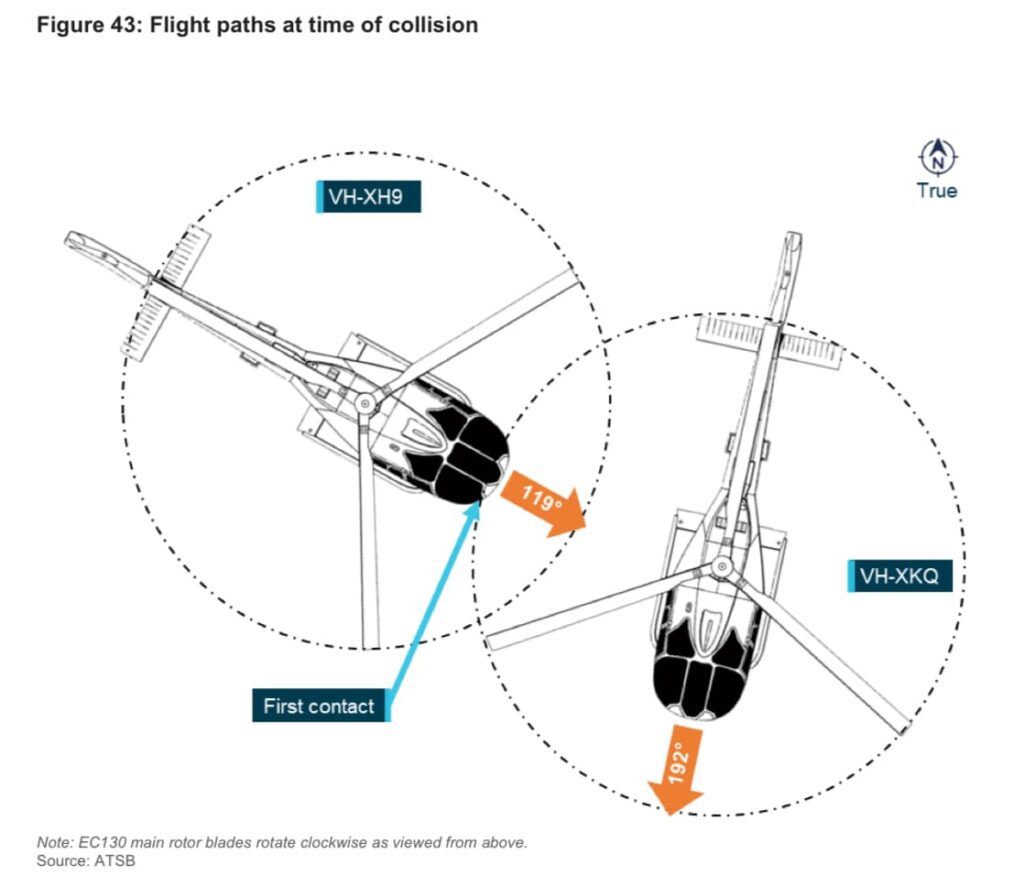
The Victims
Four lives were lost that day: Ashley, the pilot of XKQ, along with three passengers—Ron, Diane, and Vanessa. Ron and Diane were celebrating their first wedding anniversary. Vanessa’s 10-year-old son was also onboard and miraculously survived, though he suffered serious injuries.
Nine others survived the crash, some with minor injuries, others in critical condition. Among them was Michael, the pilot of XH9, who despite his heroism on that day, would sadly pass away from cancer about a year and a half later at the age of 53.
The Aircraft
Both helicopters were Eurocopter EC130 B4s—light utility aircraft commonly used in tourism operations. These aircraft place the pilot in the front left seat, unlike most helicopters where the pilot sits on the right. That seemingly small design difference would play a role in visibility limitations that contributed to the crash.
The aircraft weren’t equipped with flight data or cockpit voice recorders—nor were they required to be. Instead, Sea World Helicopters had installed passenger camera systems to sell video footage. But on the day of the accident, those systems failed to record. Investigators had to rely on passenger videos, ground footage, and eyewitness reports.
There were also inconsistencies in maintenance records, particularly with the helicopters’ fire extinguishers. One aircraft had a type of extinguisher not recommended for use in aircraft, and the other may not have had one onboard at all.
Though not direct causes of the crash, these issues raised serious questions about the operator’s overall safety culture and regulatory compliance.
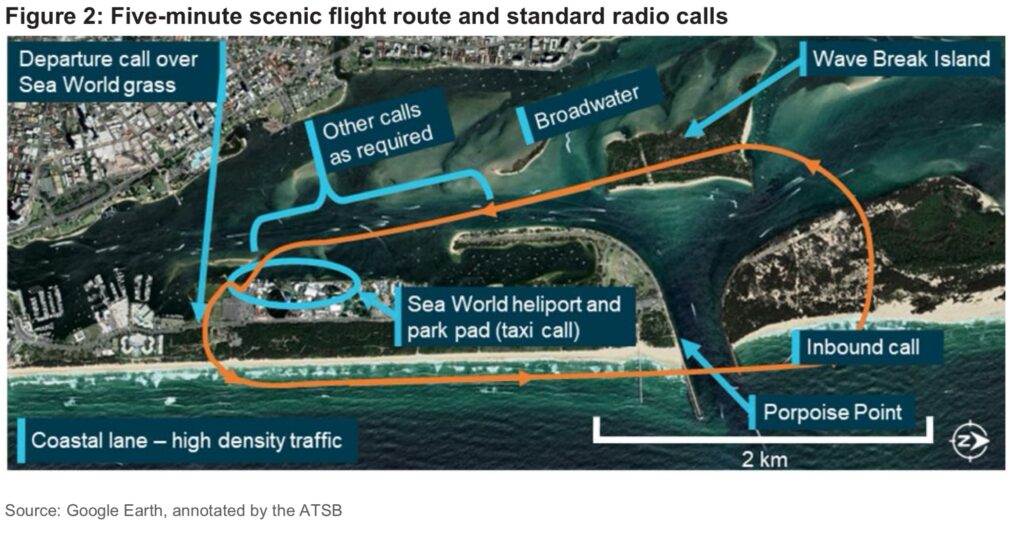
The Radios
Radio communication played a crucial role in what went wrong. Both pilots were expected to announce their movements on the common traffic advisory frequency. But the radio in Ashley’s helicopter, XKQ, was faulty. An internal wire crack, exposed connections, and corrosion meant that most of his transmissions weren’t getting through.
In fact, over the two days leading up to the crash, 94% of radio calls from XKQ were either absent or unreadable. By contrast, 90% of XH9’s calls were rated as readable. Because of the faulty radio, Michael never heard a takeoff call from Ashley—and Ashley may never have heard Michael’s inbound call either.

Visibility & See-and-Avoid
Both helicopters were operating under Visual Flight Rules in uncontrolled airspace, which relies heavily on the “see-and-avoid” principle. But this method has serious limitations.
Ashley was focused forward during his climb, and with Michael’s aircraft likely hidden in a cockpit blind spot—and further obscured by Ashley’s ballcap—he never saw the threat coming.
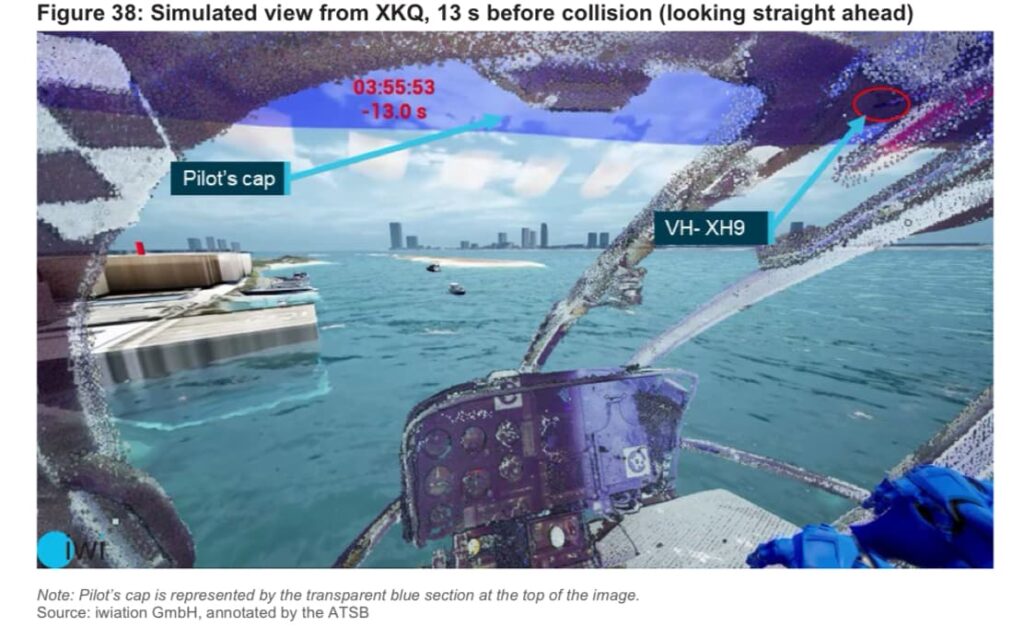
Likewise, Michael had no indication that Ashley had taken off. Focused on avoiding boats in the water, his view to the left was blocked. It wasn’t until the last second that a passenger tried to alert him. By then, it was too late.

What Went Wrong
The investigation identified 28 contributing safety factors, including:
- Faulty radios that failed to transmit crucial position calls
- Ineffective use of visibility aids and collision avoidance systems
- Inadequate safety reporting culture
- Lack of effective deconfliction procedures between helipads
- Ground crews unable to detect or warn of nearby aircraft during checks
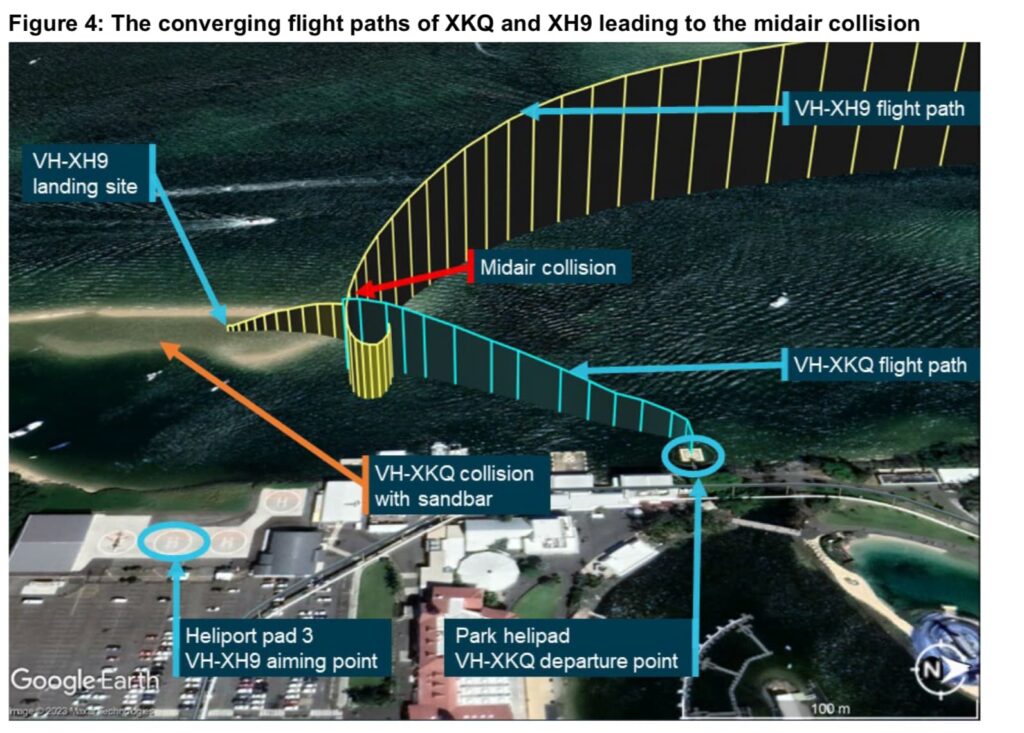
And perhaps most damning: the operator had six near misses in the weeks leading up to the crash. Five of those happened after the new EC130s entered service. Yet nothing was done to fix the problem.
The Aftermath
Sea World Helicopters made several changes after the accident, including:
- Creating a “Pad Boss” role to oversee helipad traffic
- Improving pilot communication procedures
- Re-training ground crew on seatbelt fitment
- Enhancing aircraft visibility with painted rotors and strobes
Still, four critical safety issues remain unaddressed—most notably, the need to redesign flight paths to eliminate crossing conflicts and better manage aviation risk.
Final Thoughts
This crash was not the result of a single mistake. It was a cascade of assumptions, oversights, and weak safety practices that all lined up on a clear, sunny day.
Four people died. Nine more were injured. And while one pilot’s heroic actions prevented further loss of life, the tragedy should never have happened in the first place.
Let this serve as a reminder: safety systems must be layered, robust, and actively managed. Because in aviation, when the layers of Swiss cheese align, the consequences can be fatal.

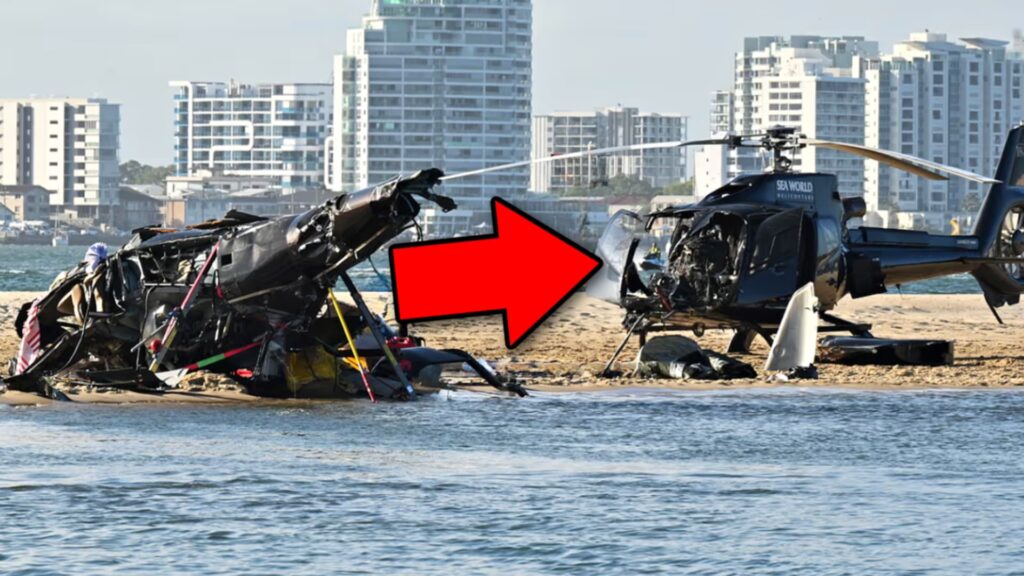


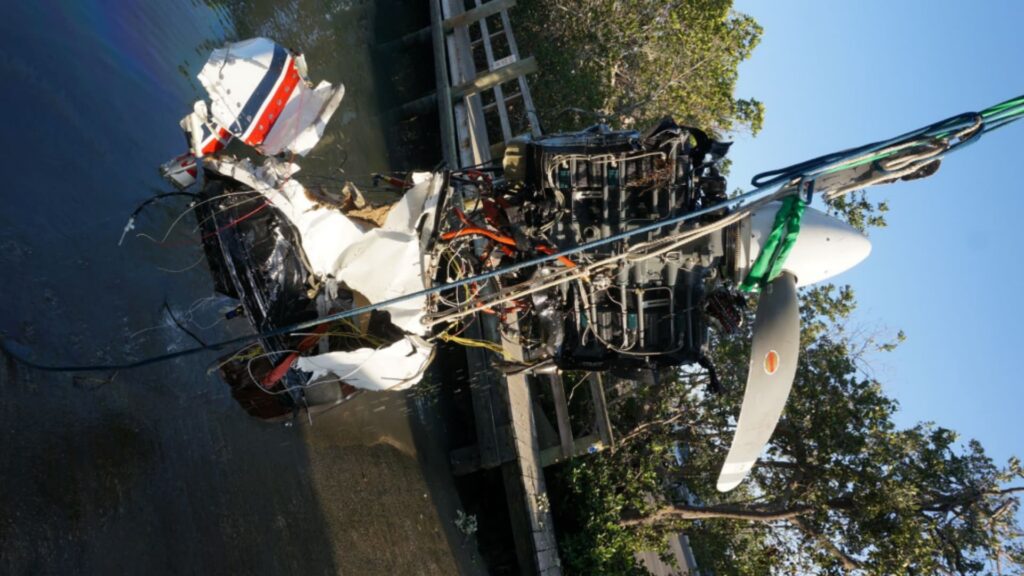






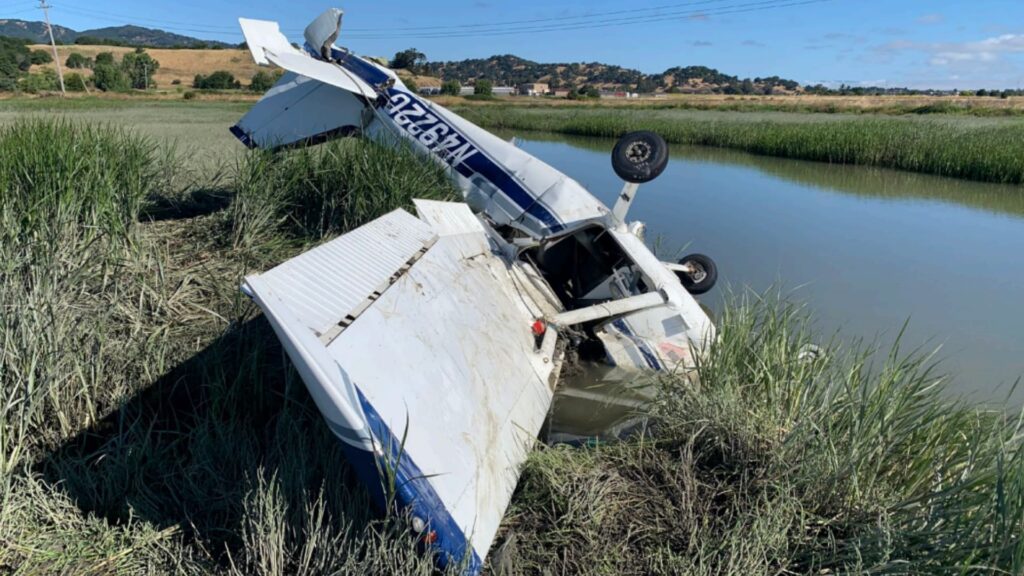
3 Comments
Thanks for the compete info regarding the accident
There must be a safety learn lesson
Appreciated and Thanks a lot
Super brief. I would think that six near misses previously would give you pause regarding your procedures. Complacency strikes again. The flight paths appear to be the issue. Can’t understand why that’s not a priority. Thanks for the brief
Suddenly I seem to be hearing about lots of helicopter accidents. 🙁.
I’d love to experience a helicopter ride, but this is worrying! The GA accident rate doesn’t seem to be slowing down much either. Is more training needed? Maybe private pilot licenses need to be harder to achieve, then there would be more experienced pilots in the skies.